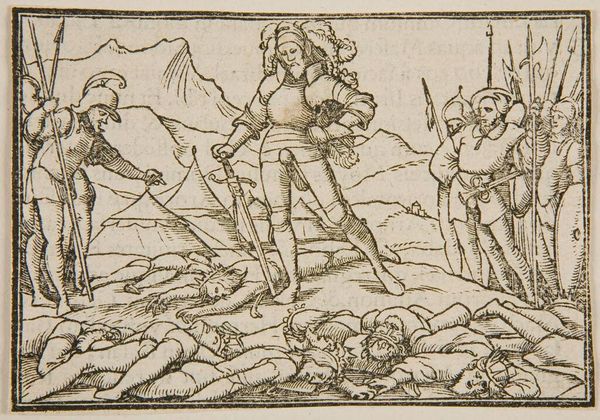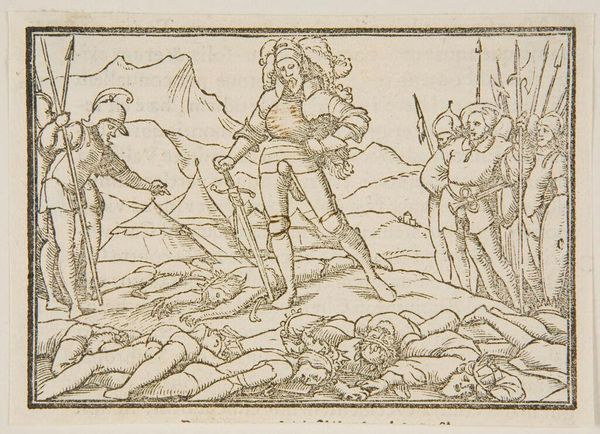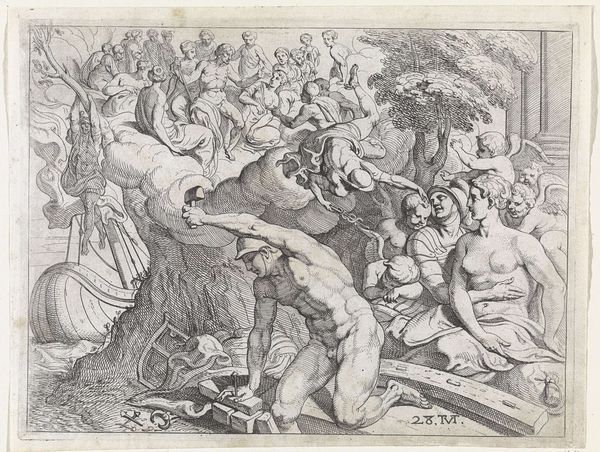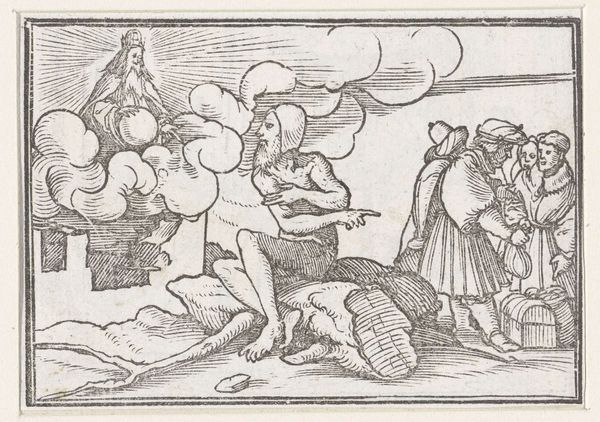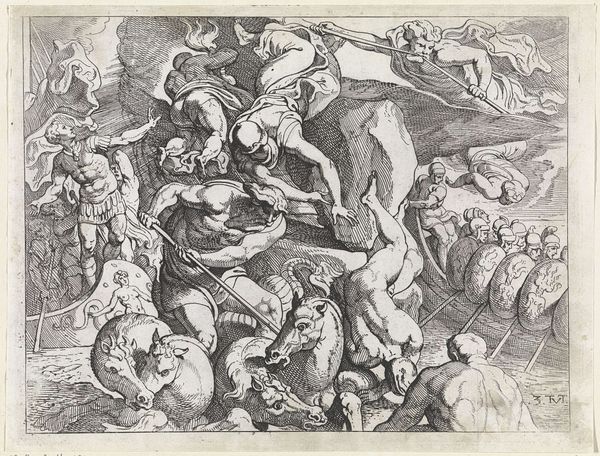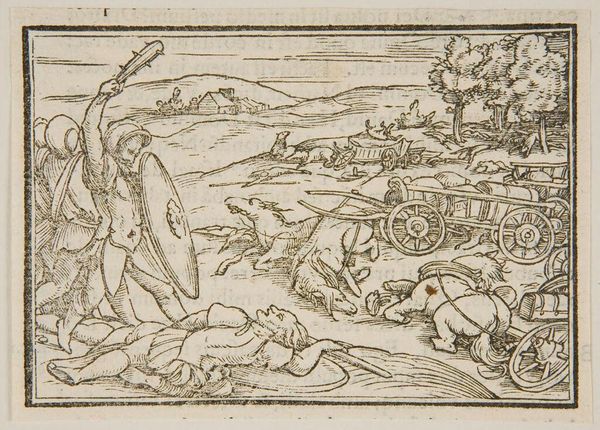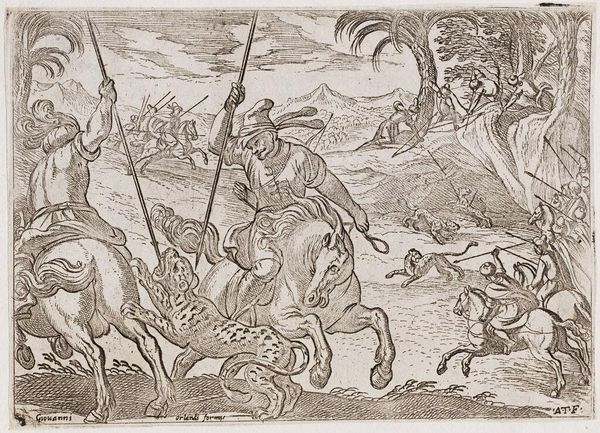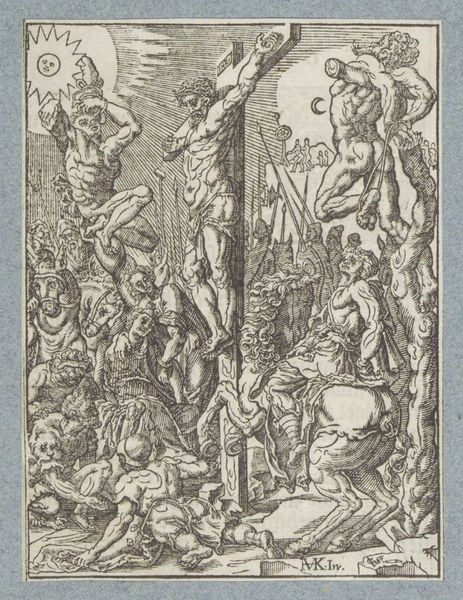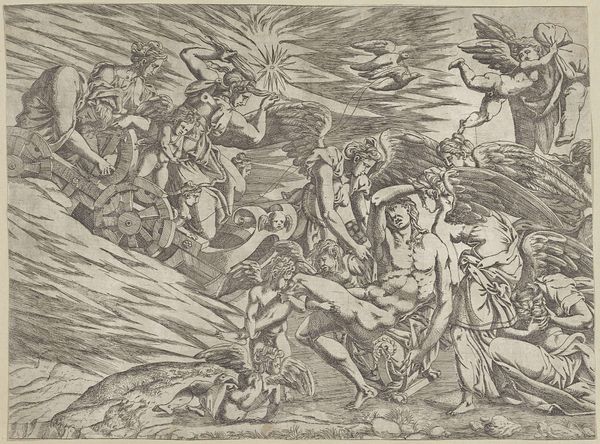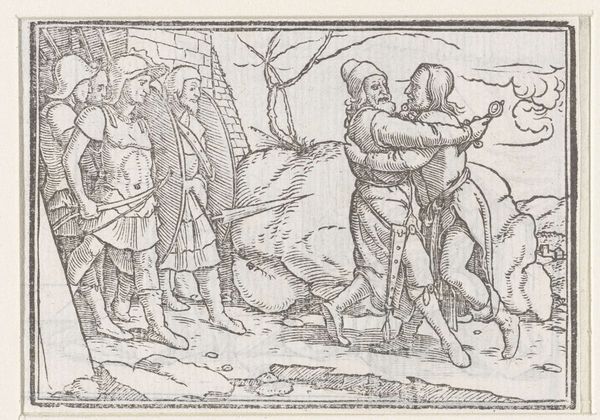
Jozua als legeraanvoerder van Israëlieten met lichamen van de verslagen koningen 1538
0:00
0:00
print, woodcut
# print
#
pen illustration
#
pen sketch
#
figuration
#
ink line art
#
11_renaissance
#
pen-ink sketch
#
woodcut
#
line
#
pen work
#
sketchbook drawing
#
history-painting
#
northern-renaissance
Dimensions: height 60 mm, width 85 mm, height 84 mm, width 99 mm
Copyright: Rijks Museum: Open Domain
Curator: Woah, okay. Immediately, I get a very harsh and almost aggressively graphic feel from this, despite the meticulous details. The rigid lines make everything seem stark. Editor: Indeed. What we are looking at is a woodcut made in 1538 by Hans Holbein the Younger, depicting "Joshua as military leader of Israelites with bodies of the defeated kings." Curator: "Defeated" is one way to put it, looks more like a battlefield massacre, doesn't it? All those fallen figures... Is that Joshua towering in the center? He's kind of a cool customer amidst all the carnage, wouldn’t you say? Editor: He is indeed. The print shows a biblical scene of conquest and divine justice, part of a series Holbein created reflecting the Old Testament. The work emphasizes themes of leadership and the consequences of defying divine will. Holbein aimed to make complex historical narratives visually accessible to a wide audience through print. Curator: Divine will always makes for great art, or at least interesting questions. The pen work almost has this insistent quality... And, is it just me, or do the supporting characters appear strangely calm, watching this whole drama play out from their remove? Like a bizarre theatre audience on the sidelines... Editor: I agree. The medium of print certainly made art more accessible, which facilitated wider dissemination of ideological narratives—just as photography or film do in modern political culture. It’s crucial to remember that works like these served ideological functions tied to religious and political powers. Curator: Ideological function. Always a complicated concept, that. I suppose every image wants to sell something, but is that necessarily an issue? What grabs me is just the emotional intensity that gets conveyed via Holbein’s rigorous artistry. Even those distant mountains feel jagged with symbolic resonance. Editor: I believe appreciating art’s social implications provides richer contexts, particularly understanding historical and cultural contingencies surrounding an artist's role within larger society. In that vein, I’d argue Holbein’s skills amplified powerful messages during Reformation times. Curator: A compelling thought to go away with. This little image shows me how graphic styles carry emotional tones, while at the same time, I wonder who paid for Holbein to create such images. Editor: Exactly! That relationship with the market always steers content—it's key to ask how art both embodies individual genius while equally representing larger sociopolitical structures. Thank you for these insightful perspectives.
Comments
No comments
Be the first to comment and join the conversation on the ultimate creative platform.
